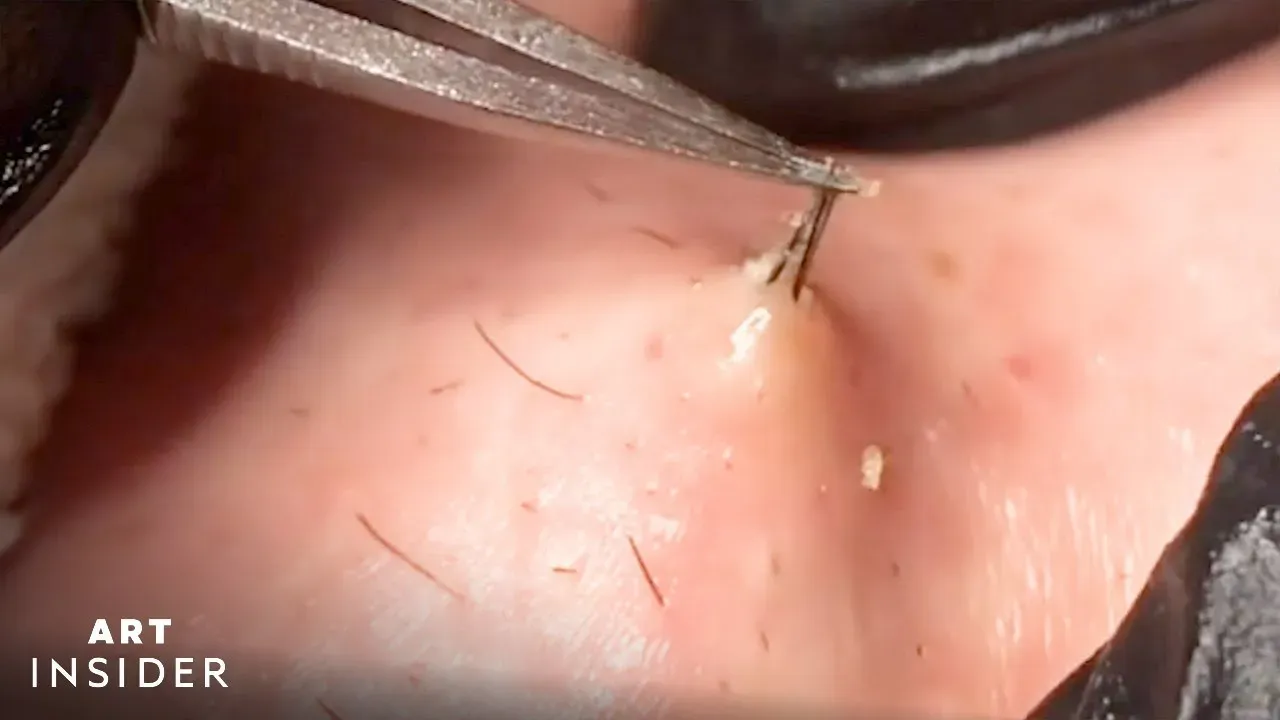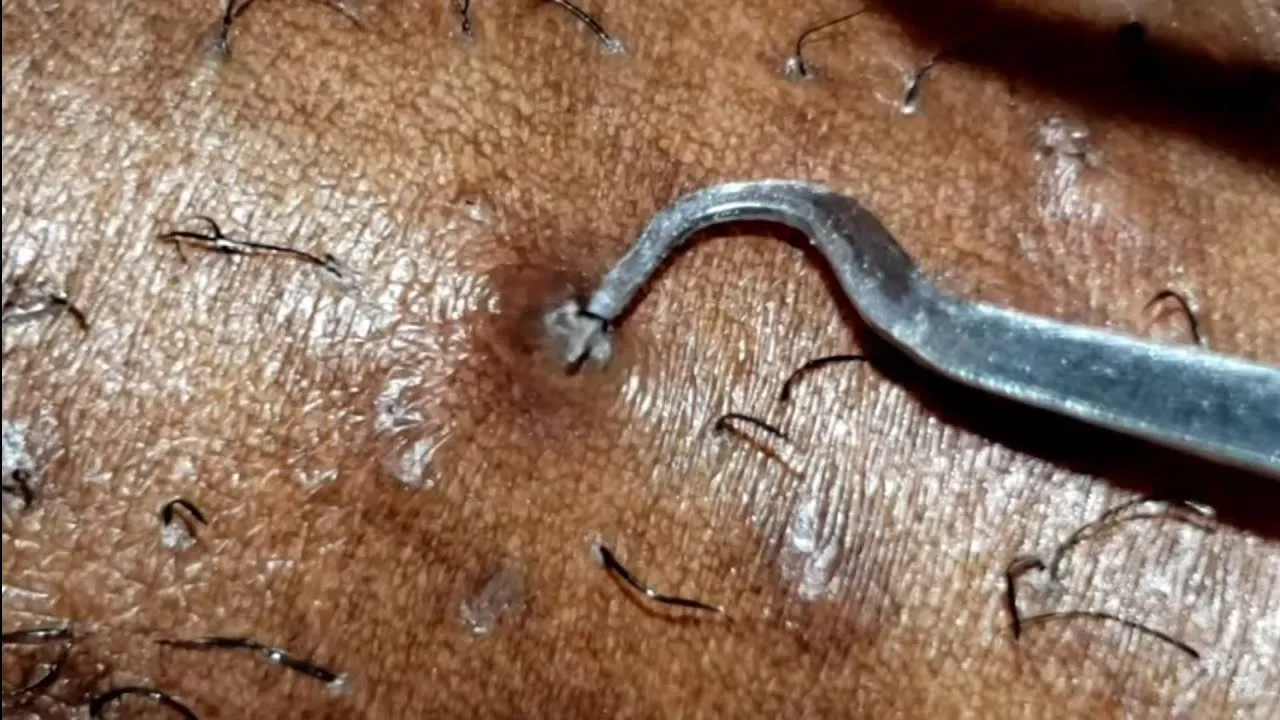Table of Contents
You’ve likely dealt with an ingrown hair or two. That annoying little bump that crops up after shaving or waxing, maybe a bit red, maybe a little itchy. Usually, a warm compress and some patience do the trick. But sometimes, things escalate. We’re talking about the kind of ingrown hair that’s a throbbing, painful menace. It burrows deep, swells into a significant lump, or even forms a cyst, leaving you wondering if you need minor surgery just to wear pants comfortably. This isn't your average skin irritation; this is extreme ingrown hair.
Understanding Extreme Ingrown Hair: More Than Just a Bump

Understanding Extreme Ingrown Hair: More Than Just a Bump
When a Simple Bump Becomes a Problem
so you know the drill with regular ingrown hairs. They're annoying, sure, but usually manageable. You might see a small red bump, maybe a tiny hair loop trapped under the skin. It might itch or feel a little sore. That's standard stuff. You might try a warm washcloth, gentle exfoliation, and often, it resolves itself or the hair pops out.
But then there's the other kind. The one that feels like a pebble under your skin, growing larger and more painful by the day. It might turn a deep red or purple, feel hot to the touch, or even start to ooze. This isn't just a cosmetic issue; it's a significant inflammatory response. We're talking about extreme ingrown hair – the kind that signals your body is really unhappy with that trapped hair, and it's putting up a serious fight.
Why Some Ingrowns Go Rogue
What makes an ingrown hair go from zero to "send help"? Several factors can push a simple ingrown into the extreme category. Sometimes it's the hair itself – thick, coarse, or curly hair is more likely to curl back and re-enter the skin than fine, straight hair. The method of hair removal plays a huge role too. Shaving too closely, dry shaving, or using dull blades can create sharp-tipped hairs that easily pierce the skin on their way back up.
Waxing and tweezing aren't off the hook either. If the hair breaks off incorrectly below the skin surface, it can get trapped. Skin type matters, too; people with thicker skin or certain skin conditions might be more prone. And let's be honest, sometimes we make things worse by picking or trying to dig the hair out ourselves. That introduces bacteria and inflammation, turning a potential problem into a full-blown crisis requiring extreme ingrown hair removal techniques.
When to Seek Professional Help for Extreme Ingrown Hair

When to Seek Professional Help for Extreme Ingrown Hair
so you've tried the warm compresses, maybe some gentle exfoliation, you've sworn off picking (mostly), and that stubborn bump is still there, looking angrier than ever. Or worse, it's getting bigger, more painful, and feels hard or fluid-filled. This is the point where you need to stop playing amateur dermatologist in your bathroom mirror. Knowing When to Seek Professional Help for Extreme Ingrown Hair is crucial because trying to handle a deeply embedded or infected ingrown hair yourself can lead to scarring, further infection, or just prolonged misery. If the area is significantly swollen, intensely painful, hot to the touch, oozing pus, or you see red streaks spreading from the bump, these are bright red flags saying "get to a doctor." Don't wait for it to become a full-blown abscess.
Professional Approaches to Extreme Ingrown Hair Removal

Professional Approaches to Extreme Ingrown Hair Removal
When the Doctor Steps In: Extraction and Drainage
So, you've acknowledged defeat against the super-ingrown. Good call. When you see a medical professional – usually a dermatologist or a primary care doctor – for extreme ingrown hair, the first step is often getting the hair out. They aren't going to hand you tweezers and wish you luck. They have sterile tools and know what they're doing. If the bump is inflamed but not yet a full-blown abscess, they might use a sterile needle or scalpel to gently lift the trapped hair loop out from under the skin. This isn't like popping a zit; it's a precise procedure to release the hair without causing more trauma. Sometimes, the hair is deep and the area is swollen. If there's a significant cyst or abscess formed around the ingrown hair, they might need to drain it. This involves numbing the area and making a small incision to release the pus and fluid. It sounds intense, and sometimes it is, but the relief from pressure and pain can be immediate. They'll clean the area thoroughly and might pack it or bandage it, giving you instructions on how to care for it afterward. This is a far cry from digging at it with whatever you found in the medicine cabinet.
Beyond the Blade: Medications and Other Options
Getting the hair out or draining an abscess is often just part of the solution for extreme ingrown hair removal. Your doctor might also prescribe medications to calm things down and prevent infection. This could be a topical steroid cream to reduce inflammation and redness, or if there are signs of infection (like significant redness, warmth, swelling, or pus), oral antibiotics might be necessary. They may also suggest topical retinoids, which help exfoliate the skin and can prevent future ingrown hairs by encouraging normal hair growth through the follicle opening. For those who suffer from chronic, extreme ingrown hairs, especially in areas like the beard or bikini line, long-term solutions might be discussed. This can include professional hair removal methods that reduce hair growth significantly, like laser hair removal or electrolysis. These treatments target the hair follicle itself, making it less likely for hairs to grow back and get trapped. For example, places like hairawaybylaser.com specialize in reducing hair growth permanently, which can be a game-changer for persistent ingrown hair issues.
- Topical Steroids: Reduces inflammation and redness.
- Oral Antibiotics: Treats bacterial infections associated with severe ingrown hairs.
- Topical Retinoids: Helps exfoliate skin and prevent future ingrowns.
- Sterile Extraction: Using tools to carefully release trapped hair.
- Incision and Drainage: Releasing pus from cysts or abscesses.
- Laser Hair Removal/Electrolysis: Reduces hair growth long-term to prevent recurrence.
Preventing Recurrence: LongTerm Strategies Beyond Extreme Ingrown Hair Removal

Preventing Recurrence: LongTerm Strategies Beyond Extreme Ingrown Hair Removal
so you've made it through the ordeal of extreme ingrown hair removal, whether it was a DIY attempt that actually worked (lucky you, don't push it) or, more likely, involved a trip to a pro. The last thing you want is a repeat performance. Preventing these painful flare-ups is absolutely key. It’s not just about treating the problem when it happens; it’s about changing the habits that let them form in the first place. Think of it as damage control followed by a strict non-aggression pact with your hair follicles. This means rethinking how you remove hair, prepping your skin properly beforehand, and taking care of it afterward.
Putting Extreme Ingrown Hair Behind You
Dealing with extreme ingrown hair is frankly, a miserable experience. It's not just a cosmetic annoyance; it's often painful, sometimes debilitating, and can lead to infection and scarring if mishandled. While the internet is full of tips for minor bumps, severe cases demand a more serious approach. Knowing when to ditch the tweezers and call in a professional is crucial. Dermatologists or other healthcare providers have the tools and knowledge to safely address deeply embedded or infected ingrown hairs, offering solutions far beyond what you can achieve with a hot washcloth.
Whether it's a simple extraction, medication, or exploring long-term options like laser hair removal (yes, like what you'd find at a place like hairawaybylaser.com), there are effective ways to tackle these stubborn problems. Prevention remains your best defense in the long run, involving smarter hair removal habits and consistent skin care. But for those times when an ingrown hair goes rogue and becomes truly extreme, don't suffer in silence or risk making it worse. Get professional help. Your skin will thank you, and you might just avoid a battle you were never equipped to win on your own.
